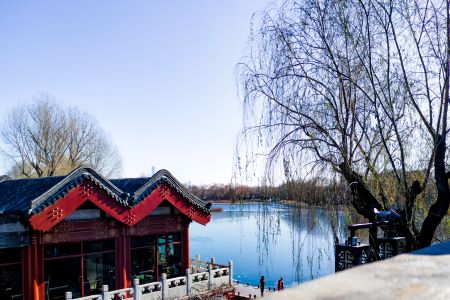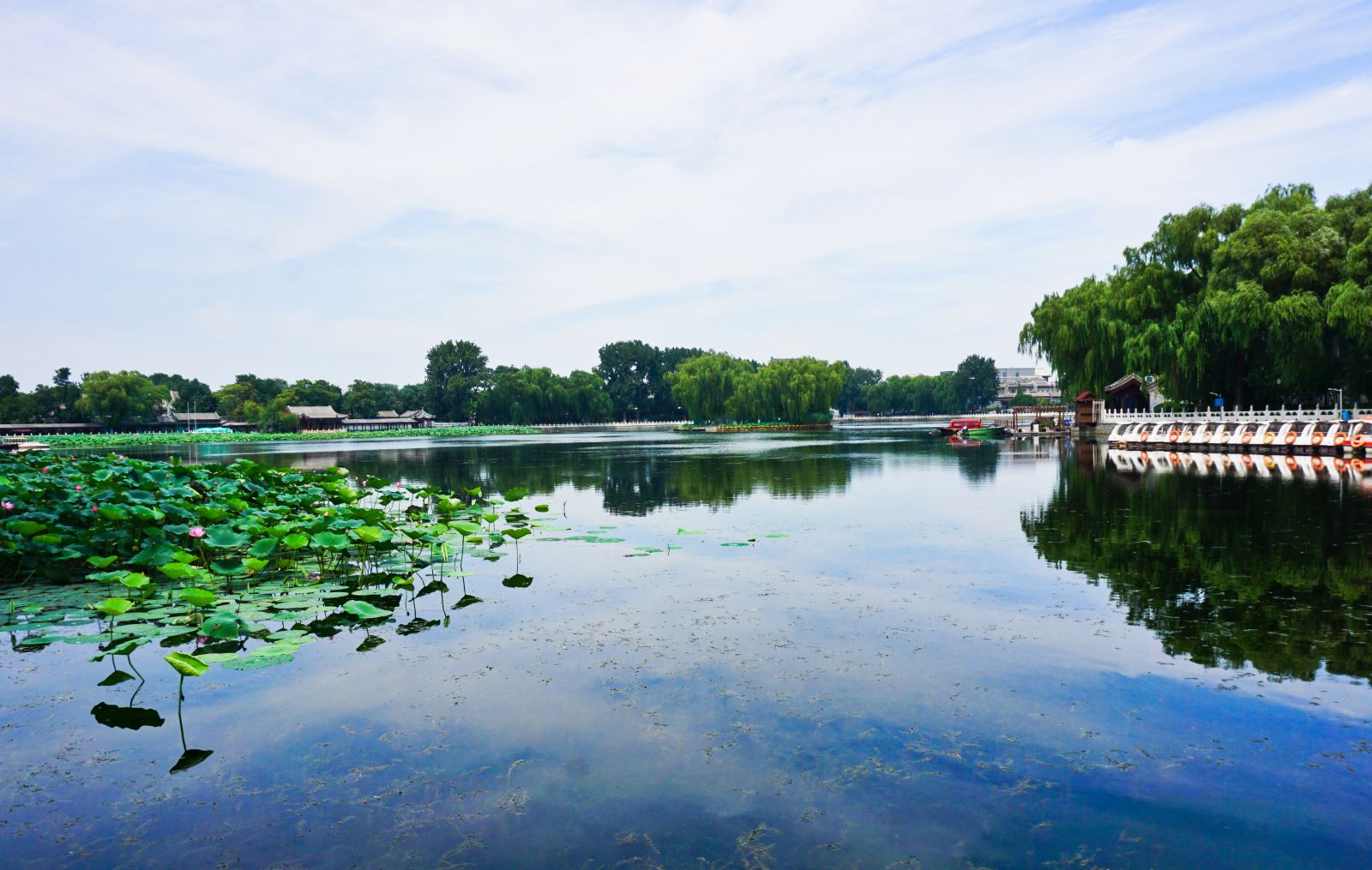Chinese Name: 什刹海 Pronunciation: Shí Chà Hǎi
Opening Hours: All day
Admission Ticket Fare: Free
Recommended Time for Visit: 1-3 Hours
Occupied Area: 3,020,000 square meters
Address: No. 49, Di’anmen West Street, Xicheng District, Beijing
Popular Activities: Enjoy lotus lanterns; Go boating; Hutong tourism
Best Visiting Season: June to August; December to February

Shichahai, got its name after the ten original Buddhist temples around it. It is dotted with tranquil lake views, former residences of celebrities, and royal palaces. It is a historical and cultural protection zone with the most complete preservation of the old Beijing style.
Shichahai includes three waters, namely Qianhai(front part of Shichahai), Houhai(back part of Shichahai), and Xihai(western part of Shichahai), and their adjacent areas, which correspond to the “former three lakes” and are commonly known as “The Three Rear Lakes” (Housanhai). Shichahai is located in the center of Xicheng District, next to the central axis of Beijing. With an area of 336,000 square meters, it is connected to the waters of Zhongnanhai.
There are also many ancient buildings in Shichahai scenic spots, the representative ones being the Prince Gong’s Mansion, the Former Residence of Soong Ching-ling, the Bell Tower, and the Drum Tower.
This area was also the main commercial area of the old Beijing. Now when night falls, tourists will come here to drink tea under the willow shade, drink coffee and wine, and revel in leisure and pleasure.

In the year 250, general Liu Jing ordered thousands of soldiers to guide the Gaoliang River for irrigation on the Sanggan River. The lower reaches of the Gaoliang River system are the area of today’s Shichahai area.
In the 13th century, Kublai Khan (1215-1294) of the Yuan Dynasty (1271-1368) decided to build a new capital. Shichahai was one of the most important bases for the planning and design of the capital. The Yuan Dynasty once determined the central axis of its capital construction on the east bank of this area. Shichahai became the core of the urban planning and water system in the Yuan, the Ming (1368-1644), and the Qing Dynasties (1636-1912). The wide and long water surface, Shichahai, was known as Haizi in the Yuan Dynasty.
In the middle of the Ming Dynasty, the paddy fields in the Shichahai area increased and the lake surface decreased sharply. Later, it gradually formed the Xihai, Houhai, Qianhai, and therefore three waterways are interlinked.
After the founding of the People’s Republic of China in 1949, the Beijing Municipal Government carried out desilting on Shichahai and built cement railings on the shore.
In 1688, the Shichahai was dredged and expanded.
In 1992, the Beijing Municipal Government designated Shichahai as a historical and cultural scenic spot.

Located in the northwest corner of Shichahai, the Prince Gong’s Mansion is a typical palace garden. Built in the late 18th century, it is the most well-preserved Qing Dynasty palace in Beijing and can be called “the Pearl of Shichahai”. It was once the residence of He Shen, a senior minister in the late Qianlong period of the Qing Dynasty, and was the mansion of the Prince Gong.
There is a unique garden behind the mansion, named Cuijin Garden, covering an area of about 30,000 square meters. Surrounded by horseshoe-shaped earth mountains on the east, south, and west sides, the mansion is a national key cultural relics protection unit with unique and exquisite scenery.

Soong Ching-ling was the wife of Mr. Sun Yat-sen, the forerunner of the Chinese revolution and the Honorary President of the Republic of China. She lived here from 1963 to 1981. The residence is a typical Chinese courtyard, with secluded rockeries, shady trees and flowers, and a clear lake.
It was originally the residence garden of Zai Feng, the father of Puyi (the last emperor of China), and therefore it was also known as the West Garden.
Enter from the west street of Qianhai→The Prince Gong Mansion→Huixian Hall→Yinding Bridge→Yandai Byway→Drum Tower and Bell Tower→Houhai Park→Former Residence of Soong Ching-ling
Take bus 5, 82, 60, 124 and get off at Gulou Station. After getting off, walk 70 meters along the Outer Di’anmen street, turn left, walk 110 meters along the Wannian Hutong, turn right, walk 150 meters along the north side of Houhai, turn left, walk 20 meters along the Xiaoshibei Hutong, turn right, walk 510 meters along the north side of Qianhai, then you can see the Shichahai.
Take Line 8, get off at Shichahai Station, and exit A1.
Chinese: 请带我去什刹海。 English: Please take me to Shichahai.
If you go to Shichahai from the center of Beijing (Grand Hyatt Beijing), it takes about 15 minutes (about 20 yuan).
If you go to Shichahai from Beijing Daxing International Airport, it takes about 1.5 hours (about 160 yuan).
If you go to Shichahai from Beijing Capital International Airport, it takes about 40 hours (about 80 yuan).
If you go to Shichahai from Beijing West Train Station, it takes about 30 minutes (about 30 yuan).
